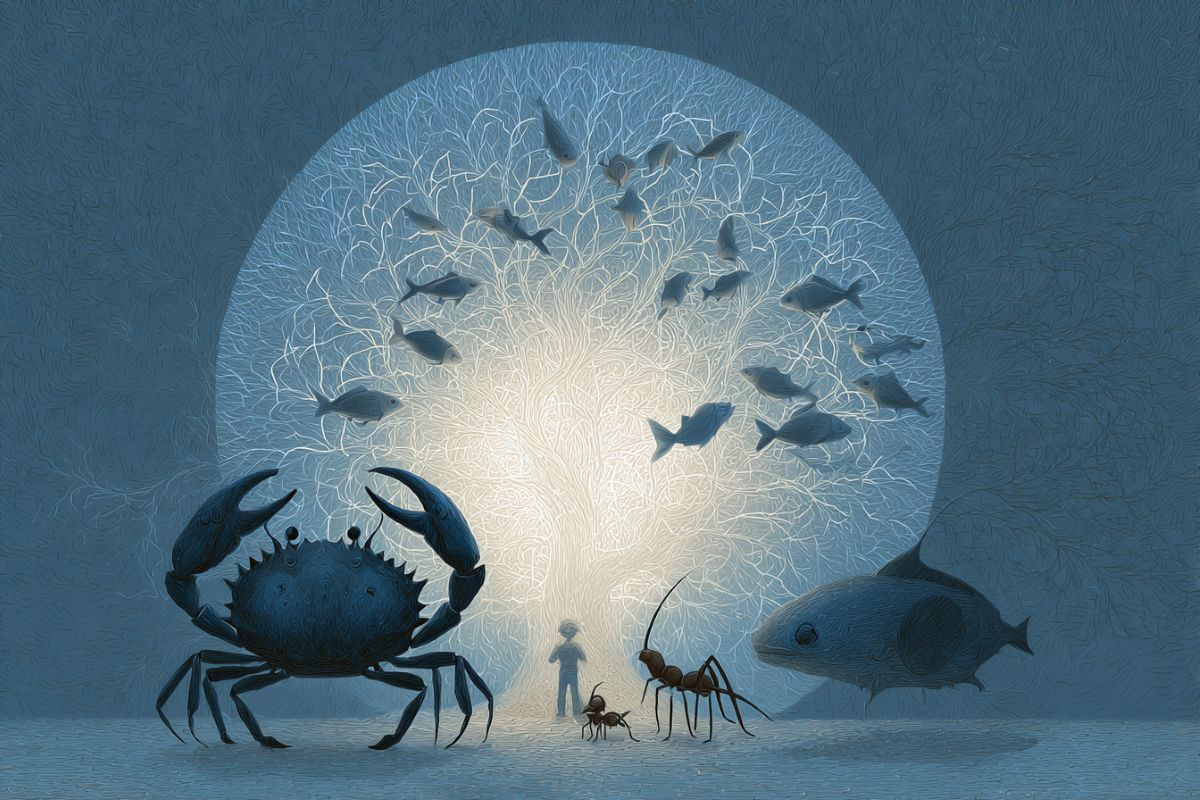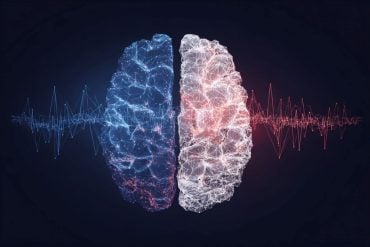Summary: A philosophy scholar has developed a practical “decision tree” to help scientists and ethicists evaluate which creatures may be conscious. The new framework clarifies decades of debate about whether animals like crabs, fish, or insects can feel pain or emotion.
It distinguishes between two approaches — one requiring clear evidence of consciousness, and another accepting that absence of markers doesn’t prove lack of it. The model aims to guide more nuanced decisions in research, conservation, and animal welfare.
Key Facts:
- Decision Tree for Consciousness: Provides a logical framework for deciding which animals may experience consciousness.
- Symmetry vs. Asymmetry: Outlines two main philosophical camps — those who require proof of consciousness, and those who accept that missing evidence isn’t disproof.
- Ethical Impact: Offers a clearer basis for animal welfare policies and how humans should value and treat other beings.
Source: Michigan State University
Beyond spirited dinner party debate, establishing which creatures have consciousness matters in terms of animal welfare and conservation policy. A Michigan State University philosophy scholar has added clarity to a messy philosophical debate.
In this month’s journal Biology & Philosophy, PhD candidate Jonah Branding contributes a decision tree that can be applied to questions such as, do fish feel pain when they’re on a hook? Does an ant feel alarm when protecting its colony? Do banana slugs feel anything when they eat dead leaves on the forest floor? Or are these simpler organisms more like stimulus-response machines, which don’t have any mental experience?
“There has been a lot of work on the question of animal consciousness in recent years and claims about consciousness are starting to be taken seriously for more and more organisms,” Branding said. “In the 1990s, there was serious debate over whether chimpanzees are conscious. Today, there is serious debate over whether plants are conscious.”
Acknowledging that creatures have feelings, thoughts and/or a first-person perspective is messy. In the paper “Can a marker approach exclude?” Branding sets some order to different approaches to ethical, scientific, and philosophical questions.
“Consciousness science is notorious for its twists and turns,” said Kristin Andrews, professor of philosophy at City University of New York and York Research Chair in Animal Minds. “In his paper, Branding offers a road map to help us answer some of the most difficult questions about which beings are conscious.”
Andrews who is not involved in the study, was an original signer of the 2024 New York Declaration on Animal Consciousness.
Branding works with markers – observable features of organisms that are thought to correlate with consciousness. They can include specific brain regions, patterns of complex behavior, or sophisticated cognitive capacities. If an animal has a lot of the right kinds of markers, the animal is probably conscious.
But what if an animal shows few or no markers? Branding breaks beliefs about that into two groups. On the side is what he calls symmetry, which is those who need evidence – a right number of markers. If the creature falls short, it’s not a conscious being.
Those who believe markers are evidence of consciousness but say that an absence of markers doesn’t prove against consciousness are in the asymmetry camp.
Branding, a member of MSU’s Ecology, Evolution, and Behavior Program, nails this as the sticky widget of the disagreement and tries to untangle it by asking what it is about that missing marker that is so important in the first place. He creates a decision tree to help narrow down the questions.
He invites considering the hermit crab. Crabs fail in a lot of markers – lacking sizable brains and generally lousy at showing those sophisticated cognitive capacities. But those crabs select their own shell houses, and when confronted with a maze, they’ve been known to swap out shells to better navigate.
“I argue that, depending on which of these approaches you start with, and what you think about a few other related issues in the field, we can figure out where you should fall on the question of exclusion,” Branding said, adding that the questions help parse out how beings in the natural world should be valued and treated.
“These are questions of how we interact with the world,” he said. “There are major ethical implications about who we have to care about morally.”
Key Questions Answered:
A: It’s a structured tool to evaluate whether an organism likely experiences consciousness, based on observable markers like cognition and brain activity.
A: Understanding which animals may feel or think has major implications for ethics, research, and conservation policy.
A: It reconciles long-standing philosophical disagreements and helps scientists make consistent, evidence-based judgments.
About this consciousness research news
Author: Sue Nichols
Source: Michigan State University
Contact: Sue Nichols – Michigan State University
Image: The image is credited to Neuroscience News
Original Research: Open access.
“Can a marker approach exclude?” by Jonah Branding. Biology & Philosophy
Abstract
Can a marker approach exclude?
If an organism displays enough of the right neural, cognitive, or behavioral “markers,” researchers can generally assume it’s phenomenally conscious. But what if it doesn’t?
Recently, there has been substantial disagreement on this “exclusion question.” According to one view (what I call the “symmetry” view), organisms lacking markers probably aren’t conscious (Dennett in Soc Res 62:691–710, 1995; Tye in Tense bees and shellshocked crabs: Are animals conscious?, Oxford University Press, New York, 2016; Birch in Noûs 56:133–153, 2022; Veidt in Biol Theory 17:292–303, 2022).
However, according to another (the “asymmetry” view), we cannot conclude anything about the presence or absence of consciousness in organisms lacking markers (Prinz Conscious Cogn 9:243–259, 2005; Schwitzgebel in Philos Topics 48:39–64, 2020; Andrews in The animal mind: an introduction to the philosophy of animal cognition, Routledge, New York, 2020, Andrews in Anim Sent 10.51291/2377-7478.1737. 2022, Andrews in Mind Lang 39:415–433, 2024).
Here I argue that this disagreement partially reflects a deeper disagreement about how markers are identified; to this end, I point to three “paths” from specific ideas about marker identification (namely, theory-based, analogy-based, and function-based approaches) to one or the other view on exclusion.
Equipped with the right auxiliary assumptions, theory- and analogy-based approaches can motivate the asymmetry view, whereas function-based approaches can motivate the symmetry view.
However, this relation is not deterministic, as different auxiliary assumptions will lead to different views about exclusion.
My distilled product is therefore a decision tree, which links views about marker identification to one or the other view on exclusion.
I hope that this tree will serve as a means of identifying “fronts” where future debate on this question can be productively focused.








